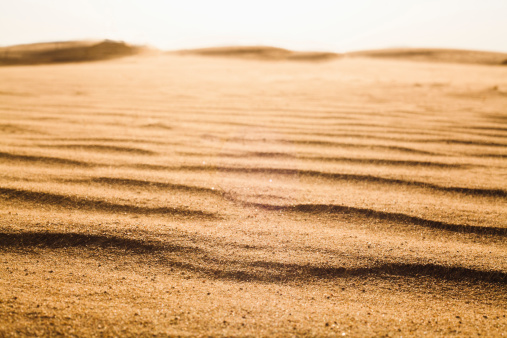A project to stop land turning into desert is showing promising results in China. There, with the help of bacteria, scientists are encouraging sand dunes to develop soil crusts capable of supporting vegetation.
Desertification is a big global problem, and no more so in China where overgrazing by farmed animals has left areas like the eastern edge of the Qubqi Desert in Inner Mongolia devoid of the fragile crust of small-scale plant life like lichens and mosses, that holds soil and sand together.
Once this fragile crust of plant life is gone, the land starts to become desert.
Using bacteria to restore soil crust in desert
But now, scientists have found a way of painstakingly restoring the crust with the help of bacteria.
Chunxiang Hu, a professor in the Institute of Hydrobiology at the Chinese Academy of Sciences in Wuhan, is working on a way to make artificial crusts made of bacteria to reverse desertification.
In a study published recently, she and her colleagues describe how they began regularly spraying cyanobacteria onto sand dunes in the Qubqi Desert 8 years ago, and observed what happened.
The study of cyanobacteria is Prof. Hu’s area of expertise. These bacteria thrive in all kinds of environment, including semi-deserts, and like plants they get their energy through photosynthesis.
Inoculation technology to stop desertification
When sprayed onto sandy areas, cyanobacteria form sticky filaments that hold soil particles together and stop them being blown away, potentially offering an ideal ‘inoculation technology’ for trying to halt desertification.
Prof. Hu and colleagues report how after repeatedly being sprayed with two filamentous cyanobacteria, crusts formed on the sand dunes and were quickly colonized by mosses.
Over time, topsoil was gradually restored, to the point that it could support 27 species of plants.
They also found that the shady side of the dunes was more conducive to crust development and colonization by plants.
Prof. Hu says cyanobacteria are already being used to control desertification in northern China, for example on the verges of roads and railways, and the margins of farms and oases, according to a report in New Scientist.
She says her team plans to seed 133 square kilometers with cyanobacteria over the next five years.

